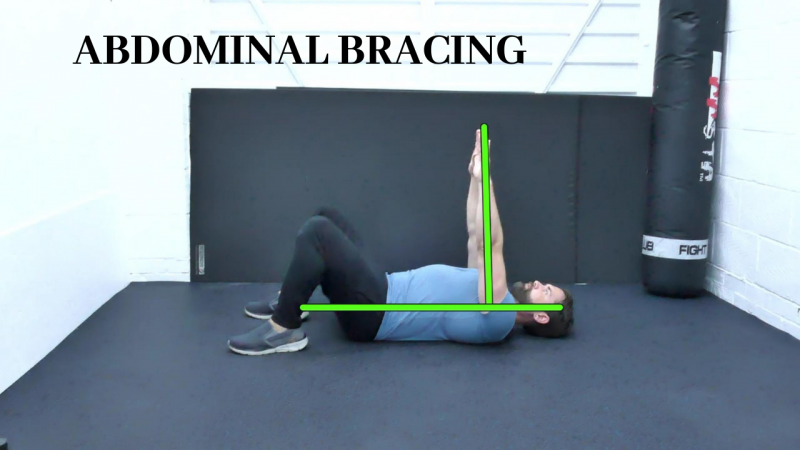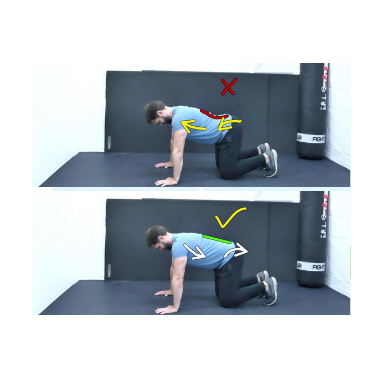
Learning how to brace your abdominals is a crucial component to not only to living a pain-free back life but also increase your performance in the gym.

When it comes to learning how to create an abdominal brace, there are some crucial concepts to understand regarding the position of the ribcage and pelvis. What I’ve seen a lot of over the years from working in a gym is people training with an excessive arch in their lower back. This arch means the rib cage is flaring up, and the pelvis is rolling forward into an anterior tilt.
The problem this creates is how the abdominals act to stabilise the torso. Muscles which help to provide stability attach laterally and anteriorly to the bottom and sides of the rib cage and down into the pelvis. If the rib cage is flared up and pelvis rotated forwards the involved muscles will be in a lengthened position that decreases stability.
Arching in the lower back can also cause unwelcomed pressure on the spine. However, from a performance point of view, there are times when we need to extend the lower-back to create power. For now, the purpose of this blog to help reduce back pain and increase core stability by preventing an arched back.
How do we achieve this stability? Finding the correct alignment is a great place to start. By bringing the ribcage down and rolling the pelvis backwards brings the deep and superficial core muscles into a more efficient position to form a 360-degree brace around the spine. It’s the co-contraction of these muscles which provide core stability. One important factor is when we have the alignment and co-contraction of the core muscles is you should be able to breathe in this position.
Breathing is an essential part of getting the most out of your working muscles. By over contracting the core muscles, it may prevent you from breathing efficiently. If this happens, reduce the level of contraction to find a smooth breathing pattern.
The level of abdominal contraction depends on the demands of the task you are about to perform. We want the brace to be reactive and subconscious, so the core muscles switch on when required, but then have the ability to switch off. Lifting something substantial would require a stronger brace, whereas a milder brace is necessary for bending over to pick something light up. With training, you will be able to find the right amount of abdominal brace to complete the particular task safely and efficiently.
A correctly positioned ribcage also increases the ability to breathe optimally. The diaphragm is the primary respiratory muscle which functions in a more efficient way when the ribcage and pelvis are aligned correctly. Due to this improved performance of the diaphragm. The accessory muscles of respiration located around the neck and upper ribcage will reduce in their tone, resulting in greater flexibility and mobility around the neck.
Before starting any exercise, find the correct alignment from the toes to the head.
Finding the abdominal brace position:
Position your fingers tips gently underneath your ribcage.
Inhale through the nose for 3-5 seconds
Exhale fully through the mouth for around twice as long to the inhale. During the exhalation tense, your abdominals, so your fingers get pushed out and drawdown the bottom of the ribcage and roll the pelvis back slightly.
Try not to suck your belly in or blow out your stomach. The aim is for you to feel your abdominal muscles activate.
Pause for 3-5 seconds before taking another breath.
The tricky part is maintaining this brace while breathing. The video shows how to brace in three different positions. Each one is fundamental in learning to help reduce back pain and improve performance.
I hope you found this useful. As always, please let me know if you have any questions.
